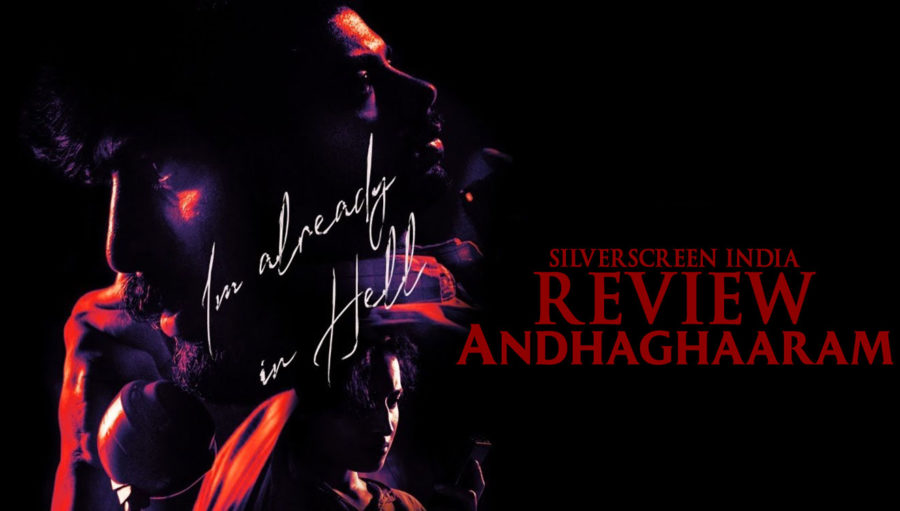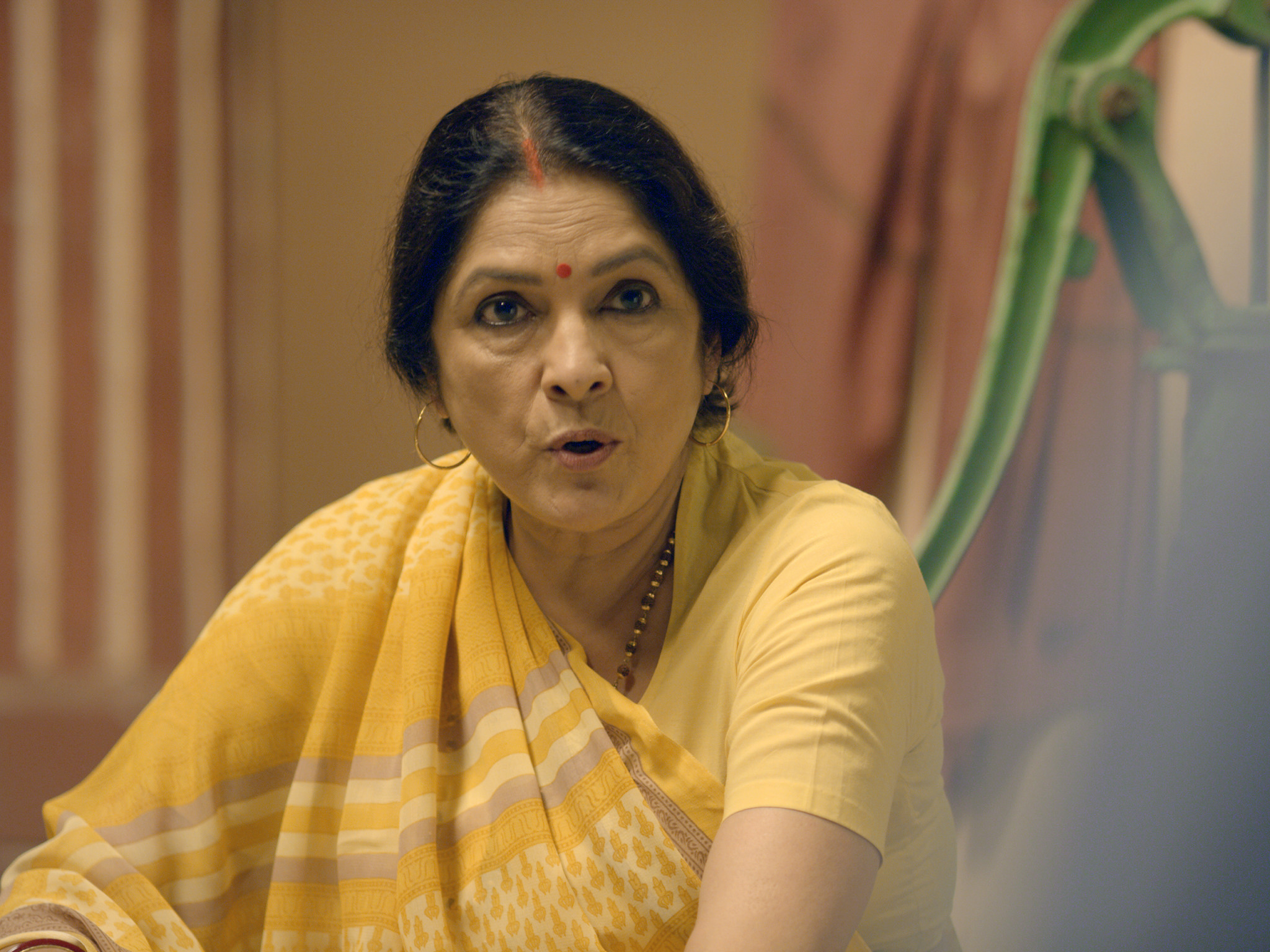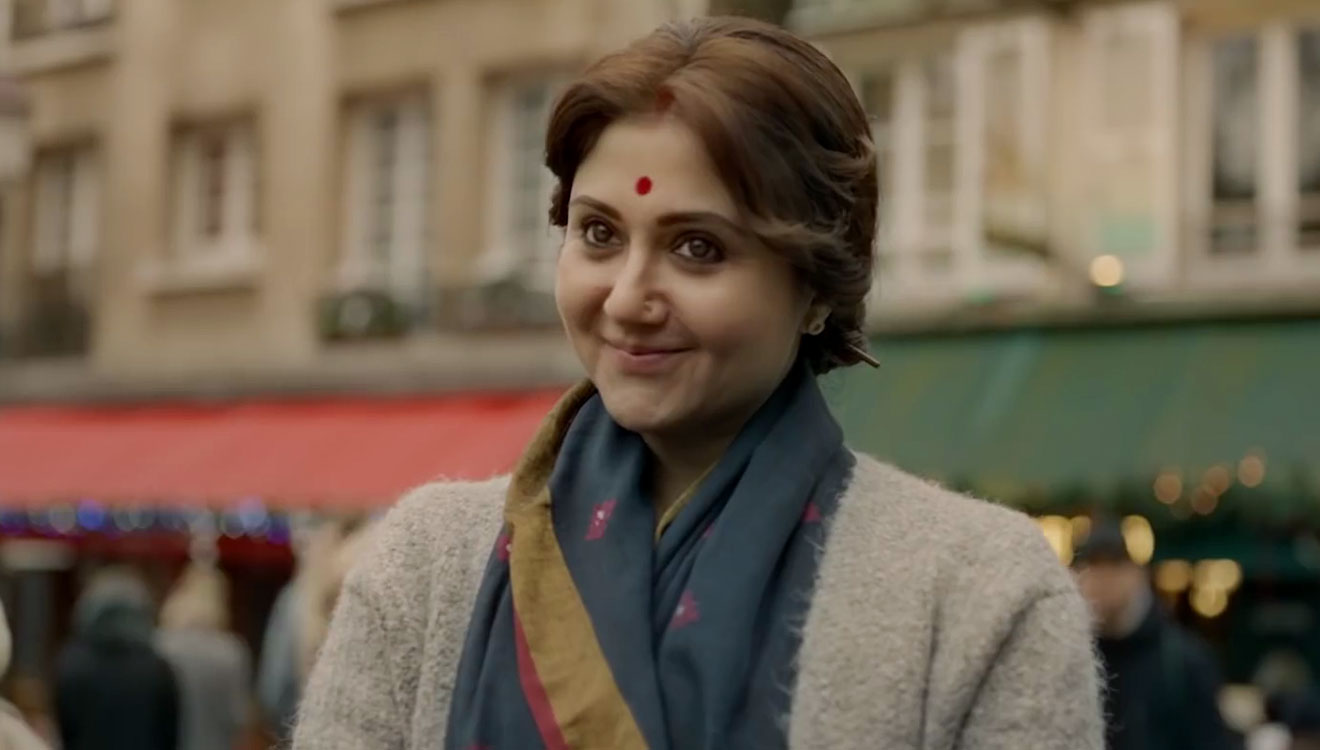Director: V Vignarajan
Cast: Vinoth Kishan, Arjun Das, Kumar Natarajan, Meesha Ghoshal, Pooja Ramachandran, Jeeva Ravi
As the title suggests, V Vignarajan‘s Andhaghaaram is shrouded in darkness. And so are we. It begins with a prologue in monochrome, a series of vignettes that air drop us right in the middle of tumultuous events.
His screenplay is so strict in rationing information that more than one hour into the film, we don’t have a real idea of who is who and where this is going. That doesn’t mean it’s not interesting. Vignarajan manages to build a mood and has an eye for space and colours to make this intriguing. Shot by AM Edwin Sakay, the interiors breathe in creaky voices and rooms are mouldy enough to conjure a sense of anticipation, claustrophobia and mystery.
A tiny room with one occupant, bedraggled with wall colours resembling red oxide. A colonial era library with mounds of books and a building sealed and seedy. A neglected single screen theatre suggesting that maybe we shouldn’t trust every information fed to us in this film. We feel the darkness, suspense and thrill felt by the characters – Selvam (Vinoth Kishan) who is visually-challenged and works as a librarian – a lot of information is locked around him and within him, Vinoth (Arjun Das), a cricket coach who is given an old fashioned rotary dial by the telephone exchange, psychiatrist Dr Indran (Kumar Natarajan) who has lost his voice due to actions of a violent patient, who also killed himself immediately after. Selvam knows where the books are and works as a messenger.
Disability is ubiquitous in this film. People can’t see, some are in a wheelchair, one uses an advanced voice box tech and mental health is a recurring angle.
Duality is another theme running through Andhaghaaram. Vinoth is harassed on the telephone by a mystery man and for a while it seems like his room is haunted. Selvam is unable to clear his physics exam even after three attempts and Dr Indran has twice failed his evaluation to get back his license to counsel the post traumatic events with his deceased patient. And this could be just me, but Meesha Ghoshal and Pooja Ramachandran look a lot like each other! Vignarajan hints at this by using two Tamil films playing on television in two scenes. In one scene, the television plays Thillu Mullu, where Rajinikanth played both Indran and Chandran – two characters with vastly different conduct certificates. And in another scene, the television plays Vaalee, where Ajith played dual roles, twins, one good and another evil. Also guess what? One of them has a disability. Vignarajan seems to relish these references, another film he references is Karna, it seems to denote Selvam’s character, ironically named after but desperate for wealth, and too compassionate and generous for his own good.
The word irony is mentioned by Vinoth too. Andhaghaaram is packed with details but these details are presented to us like a crossword with clues not denoting where the words fall, across or down. Consider time. When we see the rotary dial, we think maybe the film is set some time before the 2000s and as if to throw us off further, Vignarajan shows us a Sachin innings in Sharjah. It’s only later that we realise that the film is indeed in present day and Vinoth is a cricket coach, therefore the throwback. But there is always this sinking feeling that the film is meddling with time. Clocks appear in the background often. Several little things like this add to a film that is designed and executed with flair but in the process making it dense and distant.
Vignarajan also has a lot of Mysskin-ian (has this been coined yet?) touches. Tolstoy makes an appearance and Russian literature enters the conversation in the library. The aesthetics too conform to Mysskin’s films, Chennai under dim lighting or at night-time and roads without traffic or streets teeming with people. There’s even a scene in a subway with a visually-challenged man that tugs at your heart. Even when there’s evil all around, the filmmaking from Vignarajan creates a shield of empathy around its characters, the most Mysskinian touches of all.
Recommended
Running almost three hours, Andhaghaaram can test our patience, especially when we are left more desperate for answers than the characters themselves and the final exposition is something that doesn’t work at all. It’s not a new dealbreaker for films such as this one, Vignarajan is caught in a web of his own making that that resolution is nothing but more verbal diarrhoea. What is disappointing is some of that information has already been made clear to us by that point. Vignarajan does a lot of things well, maybe he just needs to trust his audience more next time.
****
Andhaghaaram is streaming on Netflix.
*****
The Andhaghaaram review is a Silverscreen original article. It was not paid for or commissioned by anyone associated with the film. Silverscreenindia.com and its writers do not have any commercial relationship with movies that are reviewed on the site.



